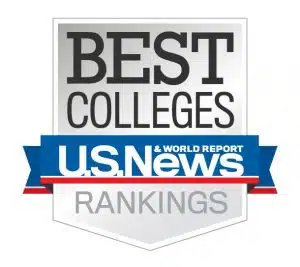Early Action allows you to apply to colleges sooner and hear back earlier, which can be a huge relief. But it’s also a commitment to get your application ready much earlier than regular deadlines. So, is Early Action worth it?
Before you dive in, think about your situation. Are you confident in your top-choice schools? Do you feel good about your grades and extracurriculars so far? If yes, Early Action might be the way to go. If not, no worries—you’ve got time to weigh your options. Learn more in this blog.
- What Are the Benefits of Early Action?
- Should You Apply Early Action?
- What Are the Pros and Cons of Early Decision?
- Is It Bad to Apply Regular Decisions?
- Frequently Asked Questions
- Takeaways
What Are the Benefits of Early Action?
If you’re a high school student considering your college application options, Early Action (EA) might just be your golden ticket. It lets you apply to a college early and find out their decision sooner. It’s not binding like Early Decision, so you can apply to multiple schools without being locked into one.
Important note: be sure to check if the EA program is Restrictive Early Action (like Harvard’s) or Single-Choice Early Action (like Yale’s), as these options limit where you can apply early. Under these policies, you’re typically allowed to apply early to only one private institution, although you may still apply to public universities or schools with non-binding EA.
Nevertheless, EA has plenty of perks that can make your senior year much smoother:
1. Flexibility
With EA, you’re free to explore your options. You’ll still have until May 1 to decide where to enroll so you can compare financial aid packages, visit campuses, and weigh all the factors.
Think of it as putting your name on the VIP list at a party you’re in, but you don’t have to commit immediately.
2. Less stress later
Senior year can be intense, right? The stress can pile up quickly between classes, extracurriculars, and just enjoying your last year of high school.
By applying early, you’ll get your admissions decision sooner, usually by mid-December. That’s one less thing to worry about while your friends scramble to meet Regular Decision deadlines.
3. Better planning
Imagine this. It’s December, and you already know where you’ve been accepted. You can spend the rest of your senior year planning the fun stuff, like decorating your dorm room or deciding what clubs to join in college.
Plus, you’ll have a head start on important paperwork, like housing applications and financial aid forms.
Applying EA gives you peace of mind and a roadmap for the rest of your year. It’s like setting the cruise control on your journey to college, where you’re still in the driver’s seat, but the ride is way smoother.
Should You Apply Early Action?
Deciding whether to go for Early Action (EA) is like choosing the fast lane on the freeway. It’s a great option if you’re ready to hit the gas, but it’s not the only way to reach your destination.
Here’s how to determine if EA is the right fit for you:
Your college research
Have you done your research? If you’ve already narrowed down your list of dream schools and you’re excited to apply, EA is a no-brainer. It’s a great way to show colleges you’re serious without locking yourself in.
You’ll know your decision early, which can feel like a weight off your shoulders. But if you’re still undecided or want more time to explore your options, you might want to stick with Regular Decision.
Your academic record
Let’s talk about grades. If you’re rocking a strong GPA and have solid test scores, applying EA can work in your favor. Colleges will consider your academic performance until your junior year, which can give you a competitive edge.
However, if you aim to improve your GPA or retake the SAT or ACT to boost your scores, waiting for Regular Decision might be the way to go. That extra time could give you a better shot at impressing colleges with your final grades.
Financial considerations
Here’s where EA stands out. Unlike Early Decision, Early Action lets you compare financial aid offers from multiple schools, which is a big deal when money is a factor in your college decision.
EA gives you the benefit of early results but with the flexibility to weigh your options and make a more informed choice about your finances.
Application timeline
Early Action applications are usually due in October or November, so you’ll want to stay on top of deadlines. The good news is that you’ll hear back by December or January, which is way earlier than the regular decision timeline.
If you get accepted, you’re under no pressure to decide immediately. But if you’re not accepted outright, don’t panic. Your application might be deferred, meaning it’ll be reevaluated during the regular decision process, so you still have a chance.
Ultimately, applying EA is all about ensuring you’re ready to hit “submit” early. EA might be the way to go if you’re set on your schools, have a strong academic record, and want to avoid waiting until spring for decisions.
If not, Regular Decision gives you more time to perfect your application and explore all your options. Either way, the key is choosing the best path for you.
What Are the Pros and Cons of Early Decision?
You’ve probably heard about Early Decision (ED) when it comes to college applications. It’s a big deal because it’s a binding agreement. If you apply for ED at a school that accepts you, that’s it; you’re going there.
Applying ED is like saying, “This is my dream school, and I’m all in.” You must be 100% sure it’s the right choice. Let’s chat about the pros and cons so you can decide if ED is the move for you.
The pros of Early Decision
Colleges love ED applicants. Why? Because it shows you’re serious. This can give you a better shot at getting in since schools often accept more ED applications than regular ones.
ED typically has higher acceptance rates than RD. Imagine a school with a 20% acceptance rate for regular applications but 40% for ED. Sounds pretty tempting, right? Just remember, those higher numbers don’t mean it’s easy. You still need to bring your A-game with your application.
One of the best parts about ED? You’ll know where you’re headed by December or January. That means no waiting until spring, biting your nails while decisions roll in. If you get that “yes,” you can focus on enjoying your senior year without the constant stress of college apps hanging over your head.
The cons of Early Decision
Here’s the catch. ED is binding. If accepted, you’re going to that school, no matter what. You also have to pull your applications from all other colleges. This is a serious commitment, like putting all your eggs in one basket. It’s important to be 100% sure that this is where you want to spend the next four years.
Also, you’re committing to a school before seeing how much financial aid they’ll give you. If you’re hoping for scholarships or aid, this could be a gamble. You can talk to the school if the aid package isn’t what you expected, but there’s no guarantee they’ll adjust it. So, if money is a big factor for you, ED might not be the best option.
Another downside? You won’t get to see what other schools might offer. With regular applications, you can compare financial aid packages, campus vibes, and program strengths before deciding. You’re locked in with ED as soon as you get that acceptance letter.
Is Early Decision right for you?
So, how do you know if ED is the way to go? Ask yourself:
- Do I have a clear first-choice school?
- Am I 100% sure this is where I want to go?
- Can I afford it even without comparing financial aid packages?
If you answered “yes” to all of the above, ED could be a great option. But if you’re on the fence or want to explore other possibilities, that’s okay too. Talk to your family and counselors, and think about what’s best for you. After all, this is your future we’re talking about!
Is It Bad to Apply Regular Decisions?
Applying Regular Decision (RD) isn’t a bad choice; it’s the most common route for students.
RD deadlines usually fall in January, giving you more time to perfect your application. This means you can take extra time to work on your essays, improve your grades, and even retake tests if needed.
Compared to Early Action (EA) and Early Decision (ED), RD has a more relaxed timeline, which can reduce some of the stress of applying. Plus, RD gives you more time to research schools, visit campuses, and consider which one is the best fit for you.
Drawbacks of Regular Decision
However, RD isn’t without its downsides. Since it’s the most common path, there’s more competition, as many students apply through RD. This means you’ll be up against a larger pool of applicants, making the process more intense.
For example, according to Columbia University’s Class of 2028 admission stats, the Early Decision (ED) acceptance rate was 11.9%, with 721 students admitted from 6,009 applicants. In contrast, the Regular Decision (RD) acceptance rate was significantly lower at 2.95%, with 1,598 acceptances out of 54,239 applications. This disparity indicates that applicants who applied through the binding ED program had a higher likelihood of admission compared to those who applied via RD.
Additionally, you’ll have to wait longer to hear back. RD decisions typically arrive in March or April, so you won’t know your fate until later in the year, making planning tricky. You’ll also have less time to make your final decision, as you have to commit by May 1st.
Weighing the pros and cons
Overall, RD gives you more time to present the best version of yourself and improve your application, but it comes with some extra waiting and competition. The key is to weigh the pros and cons and decide what works best for your timeline and needs. Whether you choose RD or Early Action, the goal is to find the right college fit for you.
Frequently Asked Questions
1. What’s the difference between Early Action and Early Decision?
Early Action (EA) and Early Decision (ED) sound similar, but they’re pretty different. EA is non-binding, meaning you don’t have to attend if you get in. You can still apply to other schools and compare your options, which is cool if you want flexibility.
On the other hand, ED is binding. If you get accepted, you must go to that school and can’t apply to other colleges. It’s perfect if you’re 100% sure about your first-choice school, but not ideal if you want more flexibility.
2. How do I know if Early Action is right for me?
Deciding if EA is the way to go depends on a few things. First, are you ready to apply to your dream schools right now? If you’ve already done your research and feel confident, EA can be a great way to get your application in early and hear back sooner.
But if you’re unsure about your schools or need more time to prep your application, waiting for Regular Decision might be a better fit.
3. Can I apply to more than one school Early Action?
Generally, you can apply EA to multiple schools. However, some schools have a Restrictive Early Action (REA) or Single-Choice Early Action (SCEA) policy, which typically prohibit you from applying to other schools’ EA or ED plans.
4. What happens if I get deferred in Early Action?
Don’t stress if you get deferred! Being deferred means the college isn’t making a decision immediately and will reevaluate your application during the Regular Decision round. If you get deferred, updating your application with any new accomplishments or grades before the final decision is a good idea.
5. What should I expect after applying Early Action?
After submitting your EA application, you’ll usually hear back by December or January. If you’re accepted, that’s awesome. If you’re deferred or rejected, don’t get discouraged. There are still plenty of other opportunities, and you can always continue applying through Regular Decision.
Takeaways
- Early Action lets you apply early and hear back sooner, so you can relax and enjoy a senior year without stressing about college applications.
- If you’re confident about your top-choice schools and grades, EA is a great way to get ahead, but it’s okay if you need more time.
- EA allows you to apply to multiple schools and compare financial aid offers before deciding.
- If you’re deferred, you’re not locked in with EA; you still have a shot during Regular Decision, so don’t worry!
- Not sure which application route to take? AdmissionSight’s Private Consulting Program can help determine if Early Action, Early Decision, or Regular Decision is right for you.









































